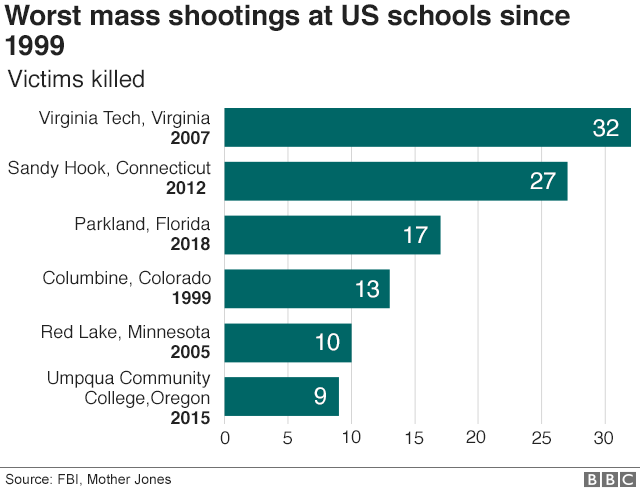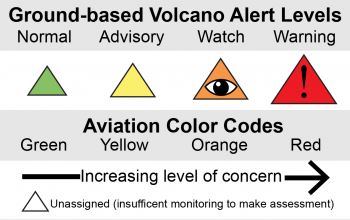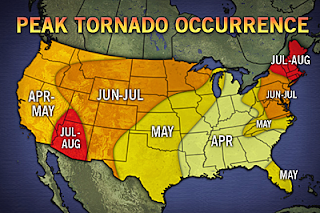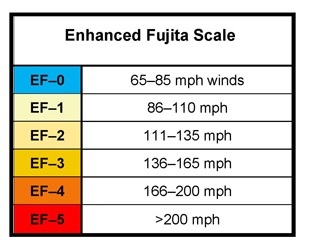Thursday, December 27, 2018
Friday, November 30, 2018
If Black Friday Is Deadly, Imagine a Disaster
Picture this: You are getting ready to do your Black Friday shopping at your local Walmart with a plan all mapped out for getting the best deals. You arrive early and get a great parking spot. It must be your lucky day; little do you know a man is about to fly into a deadly rage and open fire over that parking space. On November 25th, 2016 this actually happened at a Walmart in Reno, Nevada, where a Black Friday shopper was shot and killed over a parking space.
3 Tips on How to Better Prepare Yourself for the Chaos
Have your emergency kit in an unmarked bag:
An emergency kit is a life saver, having others know about your supplies... that can be deadly. If people are willing to shoot another for a parking spot, imagine what they would do if you are advertising survival gear. An ordinary looking backpack allows you to better blend in with the crowd and increases your safety in an emergency.
Have a plan ahead of time:
A disaster can happen any day at any time. If you work an 8 hour job, then 1/3 of your time is spent at your work. If your child attends school, then they are there between 6-7 hours a day. If they are in extracurricular activities then they are there even longer. Statistically, there is about a 33% chance you won’t be with your family when a disaster strikes.
Planning ahead can help you know what to do when an emergency occurs. Schools and workplaces should have an emergency plan already laid out, being aware of what that plan is ahead of time can help you better structure your own. Knowing what your child's school will do can help you know when and where you can pick them up and head to an emergency shelter, or if possible a remote bug-out location.
Have extra food and medication stored:
The hope is that when a disaster strikes help arrives rather quickly, however this is not always the case. After Hurricane Michael, homes were broken into and ransacked for supplies. Some areas even spray painted signs saying "Looters will be shot" and "You steal, we kill". FEMA recommends that every person have food and water supply for two weeks.
If anyone in your family is on medication, having extra medication on hand can help when pharmacies run out, and supply trucks can't get to you. The CDC recommends to have at least 7-10 days of medication and medical supplies.
If anyone in your family is on medication, having extra medication on hand can help when pharmacies run out, and supply trucks can't get to you. The CDC recommends to have at least 7-10 days of medication and medical supplies.
These are the items that will most likely be in the shortest supply and the highest demand, so people will be the most desperate to find them.
Monday, November 19, 2018
Wildfire Facts and Prevention
Did you know that there are actually benefits to wildfires? They help clean the forest floor, kill diseases, provide habitats for many wildlife, and even helps certain trees and plants reproduce. However, the destruction they leave can be devastating as seen in recent disasters. Learn more about what people think can be done to help reduce the damage, while still seeing the benefits that they produce.
Recent Wildfires

Camp Fire:
On 11/8/18 a fire broke out in Butte Country leading to the state of emergency later being declared.
As of 7:00 am "Camp Fire" has burned 151,000 acres, and is 66% contained. This fire has already lead to 15,573 structures being destroyed by the flames.
77 civilians have lost their lives, and 3 firefighters have been injured.
Camp Fire is expected to be fully contained on 11/30/18.
Monday, November 12, 2018
Updates on California Wildfires 11/19/18

Camp Fire:
On 11/8/18 a fire broke out in Butte Country leading to the state of emergency later being declared.
As of 7:00 am "Camp Fire" has burned 151,000 acres, and is 66% contained. This fire has already lead to 15,573 structures being destroyed by the flames.
77 civilians have lost their lives, and 3 firefighters have been injured.
Camp Fire is expected to be fully contained on 11/30/18.

Hill Fire:
On 11/8/18 a fire broke out in Ventura Country.
November 16th Hill Fire was reported to be 100% contained. This fire has burned 4,531 acres, and lead to 4 structures destroyed.
There have been no reported injuries or fatalities.
 Woolsey Fire:
Woolsey Fire:On 11/8/18 a fire broke out in Los Angeles and Ventura Country.
As of 7:00 am "Woolsey Fire" has burned 96,949 acres, and is 94% contained. This fire has already lead to 1500 structures being destroyed by the flames.
3 civilians have lost their lives, and 3 firefighters have been injured.
Woolsey Fire is expected to be fully contained on 11/22/18.
Thursday, October 18, 2018
International Great Shakeout 2018
Emergency Zone employees participated in the international Great ShakeOut earthquake drills today. Every day here is an emergency preparedness day as we build kits, educate, and spread awareness. We were proud to participate in this global event.
Friday, September 21, 2018
Why Recent Disasters in Japan Spells Trouble for Us All
Whether you believe that climate change is caused by man or naturally occurring, it's hard to deny the earth is getting hotter.
George Tselioudis, a researcher at NASA Goddard Institute for Space Studies, predicts that temperatures around the equator won’t change too much, but the temperatures near the poles will rise. It's believed that these changes in temperature will affect natural disasters and decrease the number of storms we will have. The bad news is that there will be an increase risk of things like drought and storm intensity.
As the temperature around the poles rise, the ice caps and glaciers will continue to melt. This will cause sea levels to rise. The Intergovernmental Panel on Climate Change predicts that by 2100 sea levels will rise 0.36 to 2.5 feet. This can lead to an increase in typhoon and hurricane damage as storm surges and flooding can be greater.
Friday, July 27, 2018
Women's Safety: Test your knowledge with these 7 scenarios
You are driving home late at night. A car seems to be following, but you shrug it off telling yourself you are simply being paranoid. You make several turns as you get closer to your home. You look in the rear view mirror and the car is still right behind you. A chill runs up your spine.
Friday, June 22, 2018
How to Prepare Your Pet for Emergencies

A whimper from the living room reminds you of the one family member you forgot; your precious dog. It's only now you realize though your human family is prepared, you furry little loved one is not. Your kids are in the car crying, and your wife is comforting them. You have no time to get any supplies for your dog. You clip his leash on and drag the frightened dog to the car.
Little do you know, your city's evacuation shelter, like many, only allow service animals.
There is no option, you take the leash off your dog and leave him outside hoping he can fend for himself.
It doesn't have to be like this.
It's 3:00am and an evacuation alarm sounds. Everyone is groggy, but you know you need to get your family to safety. You run to the closet. You grab your family's emergency kit, and the pet emergency kit; luckily, you were prepared. As your wife takes the kids to the car, you run to the living room and pull out the folding dog carrier. As advised by the CDC, you took the time to get your dog familiar with it. He runs inside, and you are able to carry your dog to the car without any hassle.
You know that the closest evacuation shelter is not pet friendly, but you planned ahead. You know that there is a pet friendly evacuation shelter a town over. Your entire family is safe.
Monday, June 11, 2018
Did You Know Something as Simple as Sharing Photos on Social Media Can Increase Your Odds of a Cyber Attack?
 Many people worry about threats they can see, but what about the ones you can't? A study was conducted that showed Americans check their phones 46 times a day. During that time you are giving out all sorts of information even if you don't know it. Did you know that your cell phone carrier always knows where your phone is due to cell towers? Think of how often you have your phone on you, if someone were to hack into this data, they could find your exact location. Are you aware that your baby monitor can be hacked, or even your printer? Anything that is connected to a network is at risk.
Many people worry about threats they can see, but what about the ones you can't? A study was conducted that showed Americans check their phones 46 times a day. During that time you are giving out all sorts of information even if you don't know it. Did you know that your cell phone carrier always knows where your phone is due to cell towers? Think of how often you have your phone on you, if someone were to hack into this data, they could find your exact location. Are you aware that your baby monitor can be hacked, or even your printer? Anything that is connected to a network is at risk.Wednesday, June 6, 2018
Volcanoes: Everyone is Affected
Have you seen the destruction that volcanoes can cause from the recent tragedies in the news? Did you know that there are over 1500 active volcanoes around the world? There are 169 inside the U.S. alone, 50 of which are being constantly monitored as high risk! So what do you do if you are near an eruption? How do you prepare? Here are some information and tips on how to prepare for the next eruption.
Friday, May 25, 2018
School Shootings: How Safe Are Your Children? 5/25/18
Recent Tragedies

Earlier today there was a shooting in Indiana, where a student and teacher were both injured. May 18th, 2018 there was another shooting in Texas where there were 10 fatalities and 10 injuries occurred. CNN has created a list of shootings in 2018 here.
The Statistics of School Shootings

In the Washington Post there was an article that said "the statistical likelihood of any given public school student being killed by a gun, in school, on any given day since 1999 was roughly 1 in 614,000,000. And since the 1990s, shootings at schools have been getting less common.
Monday, May 21, 2018
Hawaii in Chaos 5/17/18 12:15pm Updated 5/21/18 10:28am
Alert Levels and Aviation Color Code
Before getting into the events, having an understanding of terminology is useful to know. Updates and warnings are given through specific colors and wording.

May 3rd
May 4th
Friday, May 18, 2018
National SAFE KIDS Week
What is National SAFE KIDS Week?
National SAFE KIDS Week was created to bring awareness to accidental deaths of children. During summer months these deaths rise, as children are more at risk.
SafeKids.org is the organization that is spreading the awareness and education of child safety. They believe that it is a global epidemic as explained in the picture below.

A campaign was created to spread the education of things that adults can do. This campaign was called My High 5. The goal of it is for parents to do five things that will keep their kids safe.
SafeKids created checklists that parents can use to help prevent accidents, and keep their kids safer. There is one for cars, water, pedestrians, home, medication, play, and fire.
They also created safety tips for children of all ages, and for different types of risks.Wednesday, May 16, 2018
Severe Storms Cause Havoc in the Northeastern States Claiming 5 Lives in May of 2018
Storms have been wreaking havoc in the northeastern states in the United States of America. The storms took five lives, and caused a lot of destruction.
New York City encountered baseball sized hail during the thunderstorms, and thousands lost power.
Wednesday, May 2, 2018
How to Protect Yourself From Zika in 2018
As the weather heats up, so does the
risk for diseases like Zika and Lyme disease. In May of 2018, CDC has released
a video their findings about the rise of disease:
With the increase of risk, many are wondering how to decrease their odds of contracting one of these potentially deadly diseases. Luckily there are many things that can be done. Here is a video we liked from WaysandHow with some recommendations and tips:
The CDC advises:
1.
Avoid places where there are outbreaks
2.
Be aware of times and places for certain exposures
1.
Ticks tend to be found in vegetative areas like grass
2.
Mosquitoes tend to like the daylight hour
3.
Wear clothing that limits skin exposure
1.
Use insect repellent on the outside of clothing for additional
protection
4.
Check your body for ticks
5.
Use a bed net or a mosquito net
6.
Use insect repellent
You may
be asking, "why would I need a mosquito net?" If you are planning on
camping, laying out on a hammock, or traveling this summer, it would be a good
idea to protect yourself. Bug repellent typically has to be reapplied every 3-6
hours. Instead of simply relying on bug repellent, have another line of
defense. If you are looking for a quality net, here is an option.
For more information on Zika follow this link.
Three Strong Earthquakes Shake the Pacific on May 1st 2018
Fiji Was Hit
On May 1st, Fiji endured three separate
earthquakes. The first was that occurred was 64 miles from Lautoka Fiji, and
it was rated as a 5.2 on the Richter scale. The second was 154 miles from Fiji, and it measured in at a 5.9.
The third occurred about 10 minutes after the second and it was
157 miles from Fiji, measuring in at a 4.7.
What Should I Know?
Earthquakes are rated on the Richter scale.
This scale depicts the earthquakes energy, which gives an idea of the damage it
can cause. Below is a video of Bill Nye the Science Guy explaining how the
Richter scale works:
How do earthquakes work anyways? What is an
earthquake? National Geographic explains it all:
How Do I Stay Safe?
Earthquakes are natural disasters, and they can't be stopped. Keeping your family safe is key. When a disaster arises, it can be scary, and being unprepared can be deadly, FEMA tells us what exactly to do.
Friday, April 27, 2018
Are You Prepared for Tornado Season?
What Should
I Know?
A tornado can strike at any time of the year, but they are
most popular March-May in the southern states, and summer months for the
northern states.
They are more likely to strike between 3:00pm-9:00pm, but can occur
during any hour of the day.
Tornadoes are categorized by the Enhanced Fujita Scale. The
higher the number, the more damage is will probably occur.
What Should I Do During a Tornado?
What Should I do After a Tornado?
How Do I Prepare?
1. Have a plan before the storm strikes
2. Have an emergency kit
3. Know the dangers and signs for tornadoes
1. Dark greenish skies
2. Large hail
3. Low clouds; especially if they are rotating
4. Loud roar
5. Any alerts being broad casted
4. Have a list of your assets/valuables in case damage occurs to your property
Monday, April 16, 2018
Flooding: What You May or May Not Already Know
With the beauty of Springtime, the deadliness of floods come. The snow starts melting, and spring storms start coming.
Many places are already seeing the effects of these deadly floods.
Flooding happens, what should we do or not do during the floods?
Weather.com gives us nine great examples of the worst things you can do during a flood:
Many places are already seeing the effects of these deadly floods.
Kauai, Hawaii is in a state of emergency, and dealing with mudslides because of their flash floods. Below are pictures that depict the damages that occurred.
Flooding happens, what should we do or not do during the floods?
Weather.com gives us nine great examples of the worst things you can do during a flood:
- Drive in flooded waters, you don't know how deep it is, or how little of water it will actually take to sweep your car away. According to ready.gov "just two feet of moving water can sweep an SUV off the road".
- Use electricity in a flooded home
- Get in the flood water, as there could be sewage, disease, and/or dangerous animals
- Play with the wild animals
- Ignore flood warnings
- Not having a flood emergency kit
- Leaving things on and plugged in when you evacuate your home
- Not being properly dressed
- Leaving important belongings on the main floor where the flood will likely get them.
So what should you do during a flood?
- Go to high ground
- Avoid the areas that are currently flooded
- Never drive in the water
After the flood ensure that you:
- Check for any damage
- Get all the wet objects including carpet, as it can mold in 24-48 hours
- Clean and disinfect everything that the flood water touched
- Create a plan before repairing
- File for your flood insurance claim. Remember, only flood insurance will help you when a flood happens.
To make sure you are prepared and ready for flood season, the following are suggested:
- Create an emergency plan, and ensure everyone living in the home knows it
- Create a home inventory list for the insurance companies
- Ensure you have flood insurance, as other insurance types most likely won't cover flood damage
Subscribe to:
Posts (Atom)































